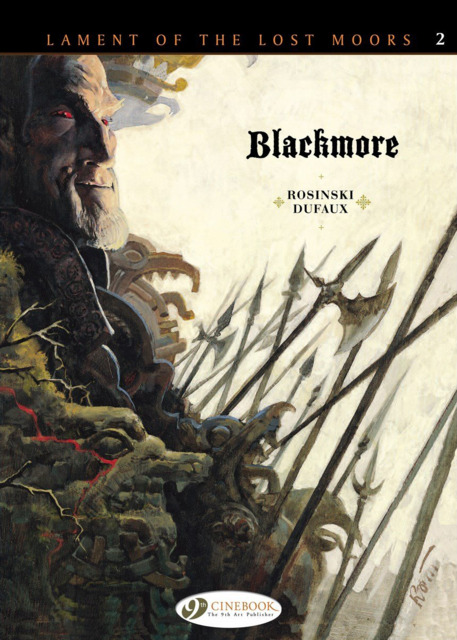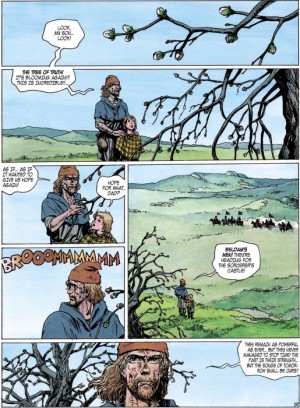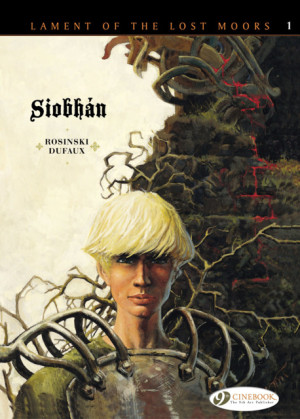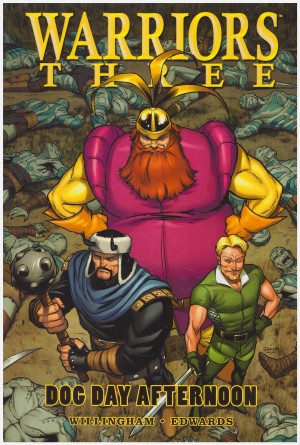Review by Jamie McNeil
Blackmore has nefarious plans for Siobhan, who has proved far more capable than anticipated during the events of the introductory album, Siobhan. He declares she must die, yet instead she’s set on a course to answer the Lament of the Lost Moors. Doing this, though, will lead to revelations about her legacy and bloodline she may not be ready for. War threatens Eruin Dulea as the Trees of Truth blossom again, forces gathering to answer the Lament or see it silenced before it’s been sung.
Jean Dufaux and Grzegorz Rosinki have altered the tone of the story, its Celtic blend now focusing more on dark myths and ghostly yarns that give an eerie ambience. There are elements that bring high drama, like the connection between the Emperor and Blackmore, and the desperate intensity of the sea battles. Sadly Dufaux chooses to rush toward a stereotypical happy ending when more than enough narrative remained. It’s not sloppy but it is hurried and spoils the story, again not helped by clumsy translation. Other details, like the cuddly Ookie suddenly having mystical powers is humorous in places but makes no sense elsewhere, resulting in an impression that Dufaux has succumbed to lazy writing.
Rosinki’s artwork matches the darker tone, the Emperor’s features grotesque and misshapen with an increased use of black ink. The supernatural aspects are highly enhanced with intricate detail, downright creepy in places and very vividly illustrated. You can sense the desperation in battle sequences as one side vies against the other in mortal combat, and heroism and honour is well displayed. Rosinski’s art is Blackmore’s strength. It is lush, mysterious, and as daft as some of the plot is, he still does an amazing job in bringing the world of Eruin Dulea to life. It is, quite simply, beautiful.
This story arc is entertaining but ends disappointingly, and it’s unknown what contributed to Dufaux rushing to it’s climax. Another volume may have realised its full potential, but Lady Gerfault is set several years after these events. The point to reiterate is that, all plot misgivings aside, this is artistically a beautiful book that mixes horror and fantasy to spectacular effect.





